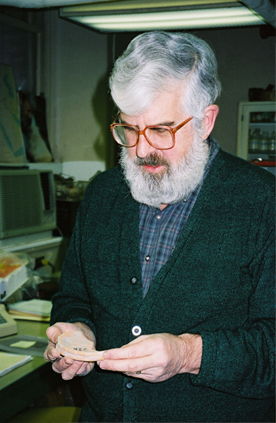From the Penn Museum

Patrick McGovern is the Scientific Director of the Biomolecular Archaeology Laboratory at the University of Pennsylvania Museum in Philadelphia. Here he is pictured holding a jar sherd from Jiahu, China, dated to about 9,000 years ago. This sherd and another twelve tested positive for a Neolithic mixed fermented beverage, the earliest chemical evidence for an alcoholic beverage from anywhere in the world. Photo: Penn Museum.
France is renowned the world over as a leader in the crafts of viticulture and winemaking—but the beginnings of French viniculture have been largely unknown, until now.
Imported ancient Etruscan amphoras and a limestone press platform, discovered at the ancient port site of Lattara in southern France, have provided the earliest known biomolecular archaeological evidence of grape wine and winemaking—and point to the beginnings of a Celtic or Gallic vinicultural industry in France circa 500-400 BCE. Details of the discovery are published as “The Beginning of Viniculture in France” in the June 3 issue of Proceedings of the National Academy of Sciences (PNAS). Dr. Patrick McGovern, Director of the Biomolecular Archaeology Laboratory at the University of Pennsylvania Museum of Archaeology and Anthropology and author of Ancient Wine: The Search for the Origins of Viniculture (Princeton University Press) is the lead author on the paper, which was researched and written in collaboration with colleagues from France and the United States. (more…)